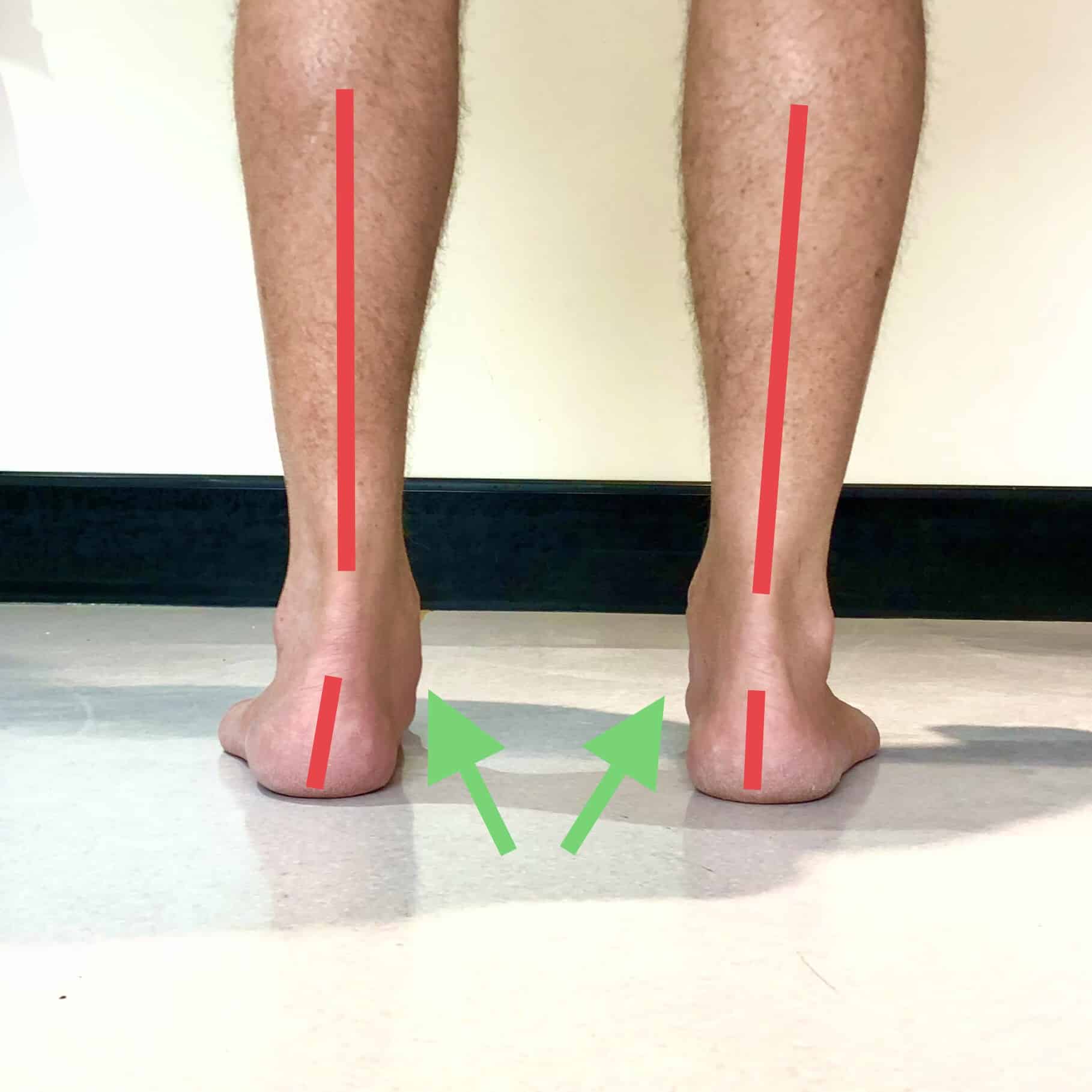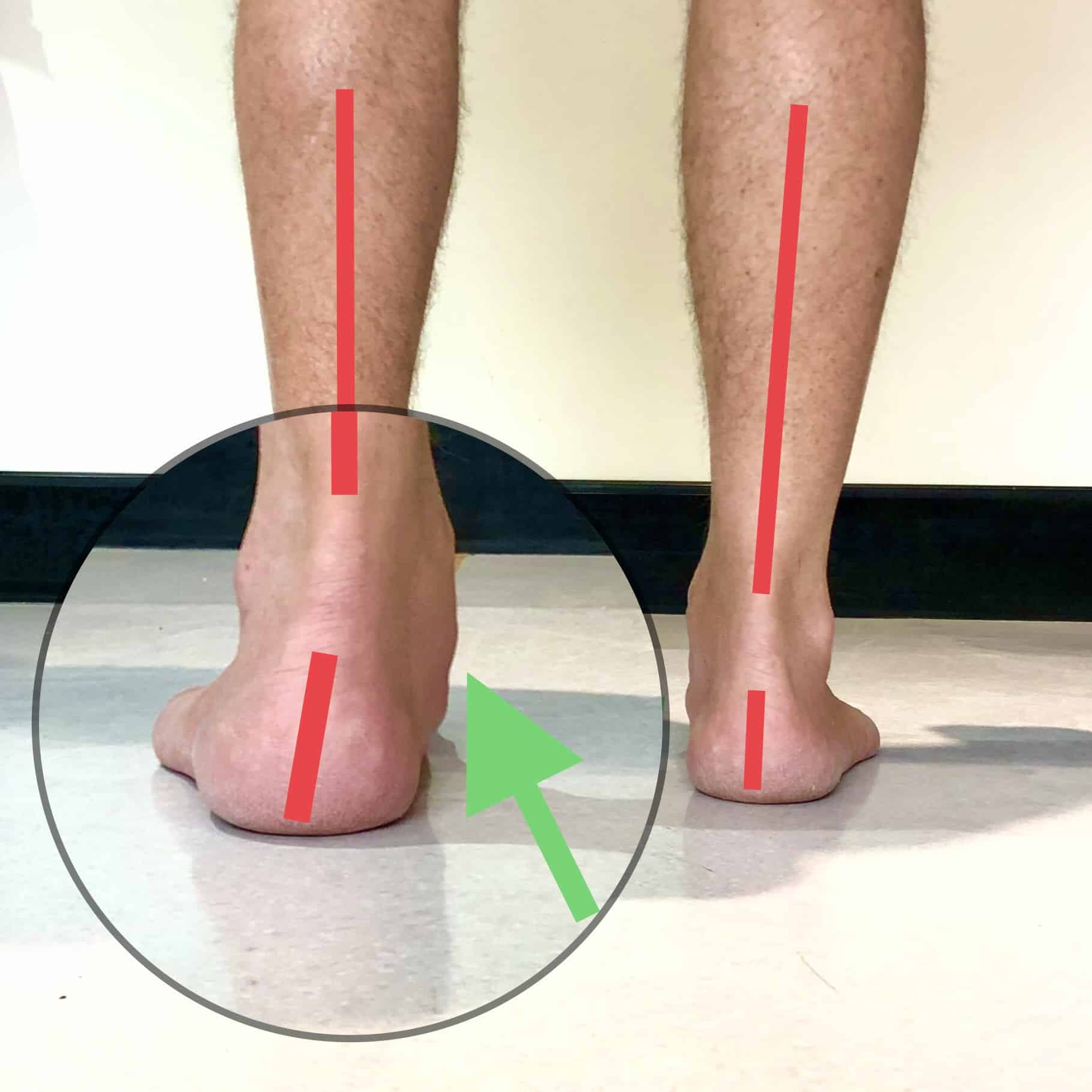Fallen Arches or Flat Feet
and what you need to know
“Fallen arches” is a bit of an old school term these days. Your Nan may have told you that if you didn’t wear the right shoes, you’d get “Fallen Arches”. Or an Elderly aunt told stories of arthritis and fallen arches. There were no iPhones back then, so you actually listened to people.
What do Fallen Arches or Flat Feet look like?

What do Fallen Arches or Flat Feet look like?
Fallen arches is most often the term to describe what feet look like when it develops a condition that sees your Tibialis Posterior (fancy muscle name) stop working as well as it should. It most commonly happens only on ONE foot at a time. This is the difference between fallen arches and flat feet.
Most commonly, we see the arch contour lowers, flattens or drops. You may also develop a bulge on the inside of your ankle. You may also note that the foot splays out particularly at the toes. This can happen very gradually over time. Which means it can sneak up on people on occasions.
After hearing all this, I mean who says podiatry is exciting!
What Do people with fallen arches or flat feet feel?
Most people who experience fallen arches at some stage will develop some pain. It’s most commonly aggravated by increased walking or exercise.
The pain is often in the arch of the foot or around the back of the ankle. However, this will vary in people.
Sometimes the Tibialis tendon will snap from the bone, and this tends to happen to people during activity. Interestingly when this occurs many times people commonly fall over. This leads them to think that they may have twisted an ankle in the fall, as the ankle becomes swollen and bruised. When presented to a GP and fitting the description, it’s often agreed that it’s a run-of-the-mill sprained ankle. It’s not until sometime later that the swelling resides and the lowered arch is noted that it’s realised it’s not a swollen ankle.
Now because I am a responsible Boring Podiatry type person, I have to make sure you understand that this is NOT super common. But is, of course, a risk!
What can you do about Fallen Arches or Flat Feet?

Fallen Arches or Flat Feet: You may see a bulge on the inside of your ankle.
There are stages or grades of these conditions; often this is referred to as, Posterior Tibialis Tendon Dysfunction or PTTD. It will depend on what stage the foot is at the time.
Exercise – Building strength in the muscles and tendon is important and will give value in most stages, BUT this will not suddenly return your arch to its former high arches glory!
Good footwear – Great supportive footwear will help support the foot. It is, of course, dependent on what stage the foot is. Again all stages will gain value from good footwear
Orthotics – Orthotics will support the arch of the foot. This may help the foot from further degeneration. These on most occasions, reduce or eliminate pain. This is again, stage-dependent! Custom orthotics at this stage are most likely to give the best result. Over the counter devices, May provide limited relief however often don’t provide enough support
Surgery – typically left for the end stages of PTTD or fallen arches; the times where this is at its worst or As described above has torn from the bone – oh Ouchie Mumma!
My suggestion is if you notice any symptoms, get to a foot doctor type person quickly. Prevention is oodles better than cure. My formula for success for most cases (stage dependent) is Footwear, Orthotics and muscle rehab to build strength.
All this leads me to suggest you probably Should have listened to your great Aunt Bess! She was in the know and while at the time the stories of her rheumatism weren’t illuminating they, if you ever go through this, will become stories you well and truly recall!
Written by Dr Brenden Brown Podiatrist aka DrFoot, Principal Podiatrist at A Step Ahead Foot and Ankle Care.
Free Report “10 things to know before choosing a Podiatrist”
Shameless Plug or where to get real help!
Need help? Need another opinion? Just want to get this sorted? Great, we’d love to help you ? You can start by calling our wonderfully helpful team on 9673 2987. They are all parents and will be able to help answer questions and guide you in the right direction.
Another option is to use our call back service, pop your details in the very short form and we will call YOU back on a number and times that suits YOU best. ?


 Dr Brenden’s White paper report on the “6 Reasons You Won’t Beat Heal Pain” outlines what’s stopping you from beating this and tips on how to stop it in its tracks!
Dr Brenden’s White paper report on the “6 Reasons You Won’t Beat Heal Pain” outlines what’s stopping you from beating this and tips on how to stop it in its tracks!